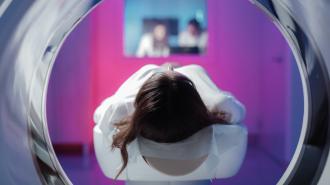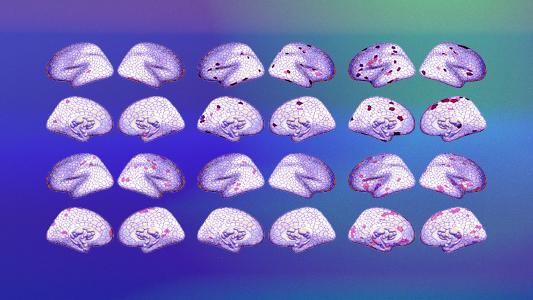Columbia University researchers have identified patterns of brain injury linked to “hidden consciousness” — and the discovery could lead to better outcomes for people in comas or vegetative states.
Hidden consciousness: Severe brain injuries can cause “disorders of consciousness” (DoC), such as vegetative states, in which a person looks awake, but lacks any indication they are aware of their surroundings, and comas, where they appear neither awake nor aware.
An estimated 15-20% of people with a DoC are also experiencing a phenomenon called “cognitive motor dissociation” (CMD), or “hidden consciousness.” That means they are aware of what’s going on around them, but they can’t physically respond to it.
(This is different from locked-in syndrome, or near total paralysis, as those patients are usually able to consciously control their eyes.)
“Detecting and predicting recovery of consciousness early on, in the intensive care unit, is often a matter of life or death.”
Jan Claassen
Why it matters: People with CMD typically have a better chance of recovery than others in comas or vegetative states, and knowing that a person has hidden consciousness can affect how loved ones and doctors choose to treat them.
“Detecting and predicting recovery of consciousness early on, in the intensive care unit, is often a matter of life or death,” study leader Jan Claassen wrote in 2022. “Families typically make decisions about continuing or stopping life-sustaining therapy within 10 to 14 days of the injury.”
The challenge: Doctors can identify hidden consciousness by giving a command to a patient, such as “move your hand,” and then looking at EEG or functional MRI data for brain activity suggesting the patient heard and understood the command, even if they couldn’t respond to it.
These approaches have limitations, though — they require staff specially trained to test for hidden consciousness, for example, and a patient’s brain activity might be affected by sedatives or other medications.
“It may be possible to screen for hidden consciousness using widely available structural brain imaging.”
Jan Claassen
What’s new? Instead of analyzing a patient’s brain activity for signs of hidden consciousness, doctors may be able to simply look at images of their brain damage, according to the Columbia team’s new study.
“[O]ur study shows that it may be possible to screen for hidden consciousness using widely available structural brain imaging, moving the detection of CMD one step closer to general clinical use,” said Claassen.
The study: Using the standard EEG approach, the Columbia team tested 107 people in brain injury-induced comas for CMD. This led to the discovery of 21 people exhibiting the known signs of hidden consciousness.
They then used structural MRI to image the brains of all of the study participants.
When they analyzed the brain scans, they discovered patterns unique to the CMD patients, including intact structures related to command comprehension and deficits in regions needed to turn an understood command into physical movement.
Looking ahead: The Columbia team says more research is needed before their MRI technique could be used clinically.
However, if it holds up to further scrutiny, it might one day make it easier to screen people for hidden consciousness, helping families and doctors make the right decisions for patients who can no longer advocate for themselves.
We’d love to hear from you! If you have a comment about this article or if you have a tip for a future Freethink story, please email us at [email protected].





